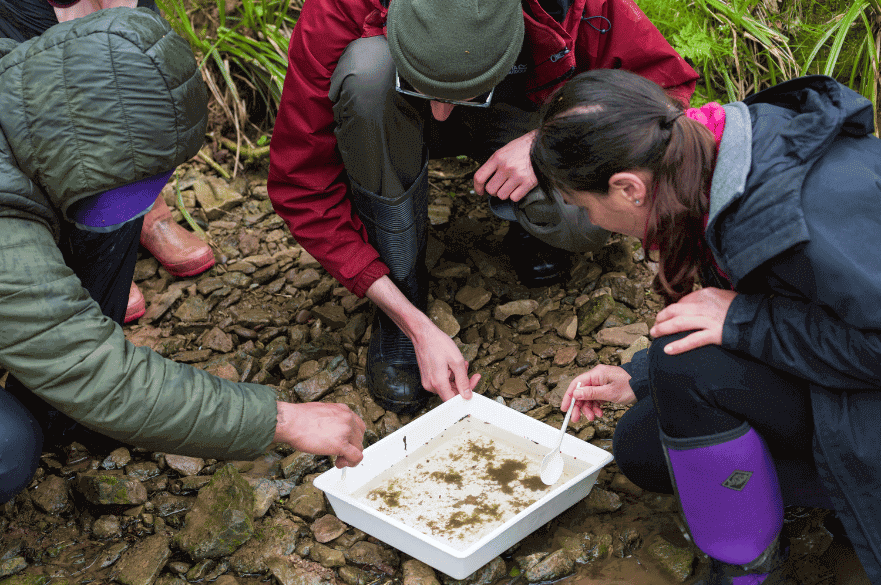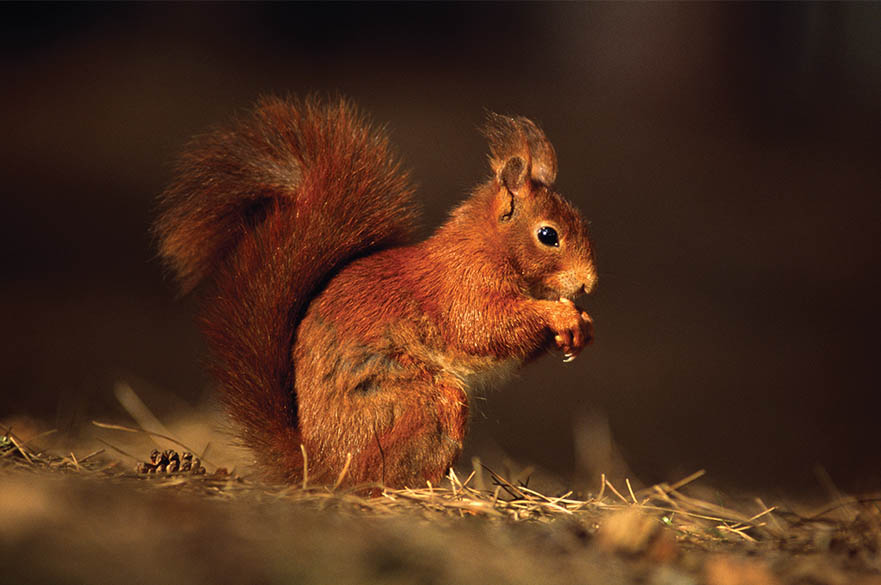Role
Dr Adam Bates is the Course Leader for BSc (Hons) Ecology and Conservation in the School of Animal, Rural & Environmental Sciences.
He is the Module Leader for Introduction to Plant Ecology, Applied Habitat Management, Ecosystem Ecology & Conservation Ecology. He also teaches on a variety of other modules including Ecological Census Techniques and Land Use Ecology.
Dr Bates is an active researcher in a variety of areas including urban ecology, green roofs, citizen science, riparian and orchard ecology.
Career overview
Dr Adam Bates has a BSc (Hons) in Environmental Science from University of Wales – Aberystwyth, an MRes in Science of the Environment from Lancaster University, and a PhD from the University of Birmingham on riparian beetle ecology.
Dr Bates started lecturing at NTU in 2015, and has previously worked as a Research Fellow at the University of Birmingham on three projects:
- The UNESCO SWITCH sustainable water project. Investigating the ecology and hydrology of green roofs.
- The Open Air Laboratories citizen science project. Delivering outreach across the West Midlands and researching the urban ecology of bees and moths.
- Leverhulme Noble Chafer/orchards project. tudying the ecology of the rare Noble Chafer (Gnorimus nobilis) and the social motivations for orchard conservation.
Research areas
Dr Bates has broad research interests centred around the invertebrates and plants of disturbed and human-made habitats. In particular he is interested in:
- the ecology and conservation of beetles and spiders living on exposed riverine sediments (poorly vegetated sand and gravel bars above the water level)
- the ecology of green roofs, particularly those designed to mimic brownfield habitat lost to urban development
- urban ecology, particularly of bee and moth pollinators
- the ecology of orchards, particularly of orchard invertebrates
- engaging with communities to investigate these research areas using citizen science
Opportunities to carry out postgraduate research towards an MPhil/PhD exist and further information can be obtained from the NTU Graduate School.
Publications
Selected publications:
Moore LJ, Petrovan SO, Bates AJ, Hicks HL, Baker PJ, Perkins SE, Yarnell RW. 2023. Demographic effects of road mortality on mammalian populations: a systematic review. Biological Reviews doi:10.1111/brv.12942
Cuthbert MO, Rau GC, Ekström M, O’Carroll DM, Bates AJ. 2022. Global climate-driven trade-offs between the water retention & colling benefits of urban greening. Nature Communications 13:518 https://doi.org/10.1038/s41467-022-28160-8
Fingland K, Ward SJ, Bates AJ, Bremner-Harrison S. 2021. A systematic review into the suitability of urban refugia for the Eurasian red squirrel Sciurus vulgaris. Mammal Review 52:26-38
Moore LJ, Petrovan SO, Baker PJ, Bates AJ, Hicks HL, Perkins SE, Yarnell RW. 2020. Impacts & potential mitigation of road mortality for hedgehogs in Europe. Animals 10:1523 https://doi.org/10.3390/ani10091523
Brunbjerg AK, Hale JD, Bates AJ, Fowler RE, Rosenfeld EJ, Sadler JP. 2018. Can patterns of urban biodiversity be predicted using simple measures of green infrastructure? Urban Forestry & Urban Greening 32: 143-153
Bates AJ, Lakeman Fraser P, Robinson L, Tweddle JC, Sadler JP, West SE, Norman S, Batson M, Davies L. 2015. The OPAL Bugs Count Survey: exploring the effects of urbanisation and habitat character using citizen science. Urban Ecosystems 18: 1477-1497.
Bates AJ, Sadler JP, Greswell RB, Mackay R. 2015. Effects of varying organic matter content on the development of green roof vegetation: A six year experiment. Ecological Engineering 82: 301-310
Bates AJ, Sadler JP, Greswell RB, Mackay R. 2015. Effects of recycled aggregate growth substrate on green roof vegetation development: a six year experiment. Landscape and Urban Planning 135: 22-31
Bates AJ, Sadler JP, Grundy D, Lowe N, Davis G, Baker D, Bridge M, Freestone R, Gardner D, Gibson C, Hemming R, Howarth S, Orridge S, Shaw M, Tams T, Young H. 2014. Garden and landscape-scale correlates of moths of differing conservation status: significant effects of urbanization and habitat diversity. Plos One 9: e86925
Bates AJ, Sadler JP and Mackay R. 2013. Vegetation development over four years on two green roofs in the UK. Urban Forestry and Urban Greening 12: 98-108
Bates AJ, Sadler JP, Mackay R. 2013. Vegetation development over four years on two green roofs in the UK. Urban Forestry & Urban Greening 12: 98-108 – Elsevier Highly Cited Research award 2016 (top five cited papers)
Bates AJ, Sadler JP, Fairbrass AJ, Falk SJ, Hale JD, Matthews TJ. 2011. Changing bee and hoverfly pollinator assemblages along an urban-rural gradient. Plos One 6, e23459
Bates A, Donovan R, Bodnar S. 2011. Building for biodiversity: accommodating people and wildlife in cities. Sadler J, 286-297 in Niemelä J, Breuste JH, Guntenspergen G, McIntyre NE, Elmqvist T, James P (eds.). Urban Ecology. Patterns, Processes and Applications. Oxford University Press, 392pp.
Bates AJ, Sadler JP, Fowles AP. 2007. Livestock trampling reduces the conservation value of beetle communities on high quality exposed riverine sediments. Biodiversity & Conservation 16: 1491-1509.
Bates AJ, Sadler JP, Fowles AP. 2006. Condition-dependent dispersal of a patchily distributed riparian ground beetle in response to disturbance. Oecologia 150: 50-60
Press expertise
- Invertebrates and plants of disturbed and human-made habitats
- Ecology and conservation of beetles and spiders living on exposed riverine sediments (poorly vegetated sand and gravel bars above the water level)
- Ecology of green roofs, particularly those designed to mimic brownfield habitat lost to urban development
- Urban ecology, particularly of bee and moth pollinators
- Ecology of orchards, particularly of orchard invertebrates
Course(s) I teach on
-
 Undergraduate | Full-time / Sandwich
Undergraduate | Full-time / Sandwichhttps://www.ntu.ac.uk/course/animal-rural-and-environmental-sciences/ug/bsc-hons-ecology-and-conservation
-
 Undergraduate | Full-time / Sandwich
Undergraduate | Full-time / Sandwichhttps://www.ntu.ac.uk/course/animal-rural-and-environmental-sciences/ug/bsc-hons-wildlife-conservation
UN Sustainable Development Goals
Elements of most of the UN Sustainable Development Goals are integrated within my teaching and philosophy.




